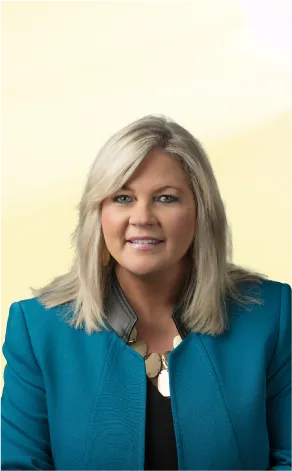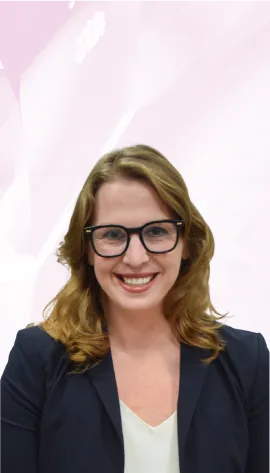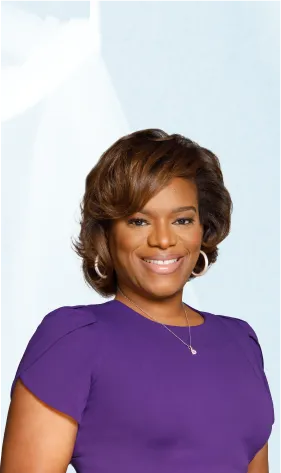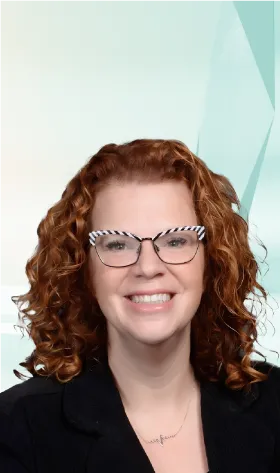Celebrating Excellence: SchoolCEO Excellence in School Marketing Award Winners
The 2024 Excellence in School Marketing Award


Celebrating Excellence
The 2024 SchoolCEO Excellence in School Marketing Award
This year, we launched the first-ever SchoolCEO Excellence in School Marketing Award to honor the incredible work school communications professionals are doing to support K-12 education. We received so many inspiring submissions from across the U.S. and Canada. Ultimately, we selected four finalists—all passionate individuals doing innovative work that pushes the field of school marketing and communications forward.
But before we introduce them to you, we’d first like to thank all of the school leaders who nominated their communicator colleagues—we encourage you to nominate them again next year. We would also like to thank all of the school communications professionals who took time out of their busy days to chat with us during the selection process. Our conversations proved what we at SchoolCEO already knew: School communications professionals are an extremely creative and dedicated bunch of people whose work is essential to the success of K-12 schools.
Now, without further ado, please join us in congratulating our finalists for the 2024 SchoolCEO Excellence in School Marketing Award! Read on to learn more about each of these amazing women and their truly excellent work in the field of school marketing and communications.
FINALIST:
Kristi McNerlin
Chief Communications Officer
Blue Valley Schools, KS
Blue Valley Schools, KS

Kristi McNerlin has a lot of experience in school communications—nearly 30 years’ worth, in fact. More than 20 of those years have been spent working for Blue Valley Schools in Kansas. It’s clear her time in education hasn’t jaded her—quite the opposite. She is more passionate than ever about finding effective ways to share the good things happening in her school district.
What McNerlin’s experience has taught her is to work smarter. “I’ve been doing this for quite some time, so I have an advantage in being able to look back and think about my early career,” she says. “School communications has leaped from a list of tasks that needed to be done to really needing to be strategic—to think ahead about who we need to reach, how we are going to reach them, how they might respond, and whether we need to make any adjustments.”
So McNerlin pays attention to whether her audience pays attention—with quantitative analysis and regular qualitative surveys. “We have to make sure that what we put out there is interesting, that it connects with our audiences and makes them trust and believe in the work that we’re doing here in the schools,” she says.
Like so many school communicators, McNerlin saw her community fracture during the pandemic. In the aftermath, she realized that renewing confidence in the school district would mean focusing on the shared values of her community members. “It’s our responsibility as communicators to find out what beliefs we have in common and how that can be a starting point for moving forward,” she says. “It’s through these shared experiences that we forge lasting connections, build trust, and help others see and feel the meaningful impact that we make in students’ lives.”
The Blue Valley Schools brand is more than just a logo and set of colors to McNerlin—it’s their story. “Our organization’s story is the heart and soul of our identity,” she says. It’s a story they share across many channels, including the district website, social media accounts, a podcast, a newsletter and a glossy quarterly magazine, to name a few. But they don’t stop there. McNerlin and her team train leaders throughout Blue Valley’s 39 schools on how to contribute to the district’s communications effort—because the more people involved, the louder the message.
As she does with all stakeholders, McNerlin began the work of empowering school leaders by surveying them to determine their needs. “We asked them, ‘What do you need to know as a school principal? Where do you feel like you fall short? What can we do to help you level up and get there? How can we help you leverage your ability to storytell?’” she says. Of course, these days, effective storytelling means being able to navigate a complicated digital landscape. “It’s easy to get behind with technology,” McNerlin says. “We have to make sure that we’re keeping our principals and administrators up to date, that they’ve got the best tools in their hands and that they know how to use them.”
McNerlin is what entrepreneur Gina Pell calls a “perennial.” She embraces new technology and new ways of thinking instead of fearing them. One of the biggest technological changes she has witnessed over her career is the emergence of AI, which she views as one more tool she can learn and share with her colleagues. Now, she’s exploring questions like: How can principals use AI to communicate with parents more efficiently? How can AI help them leverage social media to tell their story?
“There’s nothing more important than making sure that our colleagues, leadership and teachers understand how to leverage communications to build trust and to better support their schools and their classrooms,” McNerlin says. “Everyone’s a communicator.”
A former president of the Kansas School Public Relations Association (KanSPRA), McNerlin has been a member of her state organization and the National School Public Relations Association for almost 30 years—as long as she has been working in school communications. “I will tell you that the people in those organizations raised me. The camaraderie and the relationships that you build can’t be compared to anything else,” she says. “I remember my very first KanSPRA meeting. It was my first job, fresh out of college, and somebody asked me how many students my district had. I hadn’t even bothered to memorize that!”
McNerlin credits the people she met through those organizations for her career success, and now she shares her wealth of knowledge with newer members of her field. “School communication carries the power to inspire, the power to engage and connect with parents, staff, community members and each other on a deeper level,” she says. “We have a huge responsibility to share the greatness that’s going on in our public schools, and I want to help other school communicators do that.”
FINALIST:
Dr. Lauren Nolasco, APR
Chief Communications Officer
Portsmouth Public Schools, VA
Portsmouth Public Schools, VA

Her entire life, Dr. Lauren Nolasco has had a front-row seat to the transformative power of education. “I’m the daughter of two educators,” she tells SchoolCEO. “So to make a career out of putting the spotlight on public education—and highlighting the work of our teachers, the work of our administrators and the achievements of our students—it is a gift of a job.”
With an eye for design, Nolasco dove into revamping the division’s logo and website as soon as she joined Portsmouth Public Schools in 2019. She also expanded the school division’s video production capabilities, purchasing new equipment and carving out a role for a lead multimedia developer to coach current staff on how to film, edit and produce high-quality projects. In 2023, Portsmouth’s videos garnered their first-ever award from the National School Public Relations Association.
Nolasco has many strengths, but there is a particular area of school communications where she really shines—and it’s one of the toughest aspects of the job. She finished her doctorate in strategic communications last year, with a focus on crisis communications for nonprofit organizations. “Crisis is inevitable—it’s going to happen to all of us in one form or fashion,” she says. “If there’s ever a time that we can be a huge help to our administrators, it’s in a time of crisis.”
As we all know, the pandemic was a crisis of unprecedented proportions. Not only did people lose loved ones or become sick themselves, but many suffered from depression and anxiety—and many students felt isolated by the move to remote learning. So Nolasco and her team developed “Here to Help,” a campaign that both informed the community about the division’s mental health services and encouraged them to use those resources. “We wanted to really hit that message that our school counselors are still here even if we’re not on campus and that we can connect you,” Nolasco says. “And we wanted our staff members to know we have an Employee Assistance Program available. We wanted to bring these resources together in a one-stop shop to make them easier to find.”
Nolasco redesigned the webpage that housed the district’s mental health offerings to make it easier to use and more engaging. She collaborated with the district’s Offices of School Counseling and School Psychology to gather resources. And using grant funding she secured from the city’s department of health, she developed a monthlong communications rollout to reach as many members of her community as possible, tech-savvy or not.
“We realized not a lot of our parents and guardians are digital natives,” she says. “So we mailed postcards. We had 19 billboard locations across our city that directed people to the website.” Nolasco even had “Here to Help” T-shirts printed for school counselors and psychologists to wear around town.
But the most impressive part of the campaign took place on social media. “We were hearing from our staff that our African American male students had this stigma about seeking mental health resources. So we asked ourselves: How can we lower that stigma?” she says. Using an app called Cameo, Nolasco bought personal video messages from Black celebrities like Cedric the Entertainer and Anthony Anderson and posted them on Portsmouth’s social media. “Every Friday during the release month, we had someone new encouraging folks to check out the ‘Here to Help’ webpage,” she says.
The community loved it. And the “Here to Help” rollout led to a 900% increase in visitation to the mental health webpage. It was so successful that post-pandemic, the webpage became an ongoing resource for Portsmouth families. Since then, Nolasco has been invited to speak at conferences to share the school division’s success story so other districts might adopt similar tactics.
Despite the many hardships K-12 faces—and in fact because of them—Nolasco remains positive. “Am I constantly aware that there’s scrutiny around the work that we do? Yes. That’s why I’m laser-focused on highlighting achievements and partnerships and celebrating when our staff does incredible work,” she says. “We can’t retreat—we have to lean into criticism and say, ‘No, look at what great things are happening every day.’ We have to keep our eye on the silver lining. In communication, it’s our job to keep reminding people what that silver lining is.”
FINALIST:
Dr. Erica Taylor
Asst. Super for
Communications and Business and
Community Partnerships
Orangeburg County School District, SC
Communications and Business and
Community Partnerships
Orangeburg County School District, SC

Dr. Erica Taylor means business. In her role at Orangeburg County School District, she does the work of at least three women: overseeing all communication efforts, nurturing relationships with stakeholders, and forming strategic partnerships with area businesses and community organizations. But all of her various duties have one goal in common: improving students’ lives. As she told Superintendent Dr. Shawn Foster when she took her role, “The most important task I want to accomplish is to help students, faculty, staff and the community realize their full potential so that everyone embraces the opportunity to impact the life of a child.”
In her district, that has meant creating an atmosphere of customer service. “It’s really important for students and families to feel welcomed in their schools. If you work at a grocery store and someone asks where the broccolini is, you’ve got to know what broccolini is. And you don’t just say, ‘It’s over there in the produce section.’ You show them where it is,” Taylor says. In her district, that level of customer service means staff members know the answers to frequently asked questions and are willing to treat their “customers” like guests. “We have families who speak different languages. We have parents who may need support completing a school registration document or an immunization form,” she says. “It’s an opportunity to show that family that you care about them.”
Now Taylor has created a customer service manual and uses role-playing scenarios to train staff across all of her district’s schools on what—and what not—to do. “For example, if someone walks into the front office of a school and you’re on the phone, the guidelines say to look up and smile so that they know you see them,” she says. The training extends to classrooms, too, showing teachers how to communicate more effectively with families. And Taylor is aware that timing is more crucial than ever now that people take complaints to social media. “If a parent calls or emails, we encourage staff to return the call within 24 hours,” she adds. “Responsiveness is so important.”
But like Taylor says, you can’t show someone where the broccolini is if you don’t know what it is. That’s one reason why she and her team have created one-pagers for each school covering need-to-know information. These documents provide details about each school’s program offerings, student-teacher ratios, class sizes, important contacts, the academic calendar and more.
To ensure schools are providing the correct information, Taylor has even enlisted the help of “secret shoppers”—a group of retired educators who will call school offices to ask questions. All of these “shoppers” will have copies of the one-pagers in hand to make sure the answers they receive are accurate. The point is to make sure the district’s staff members are providing the best service possible to current—and prospective—students and families.
Because Orangeburg County is located between two major cities, it has become a draw for new businesses—and Taylor is very involved in showing incoming business leaders why her district makes the area an excellent place to live and work. “We have executives who check out the schools to find the best place for their children to go. We want them to have all the information they need to make the decision to come here,” Taylor says.
Like the “business and community partnerships” aspect of her title implies, Taylor works closely with local businesses and organizations to attract new people to the area. She has convened a meeting with communications professionals from entities across the city and county—including the sheriff’s office, the economic development commission, the public safety commission and local colleges. “I called it the Orangeburg County Communications Roundtable,” she says. “I wanted to provide an opportunity for us all to ask ourselves: How do we work together to make certain that people are interested in coming to Orangeburg?”
Beyond the roundtable, Taylor has partnered with Boeing to create new job opportunities for students. Through a partnership with another organization, she has garnered funds for billboards to advertise the district along the major highways that run through Orangeburg County. She’s even developed a valuable partnership with the Palmetto Citizens Federal Credit Union that helps educators pay for housing.
“If you want to recruit people to work, you have to have a place for them to live when they come,” she explains. “Because of the need for affordable teacher housing, we were able to secure a grant whereby teachers can receive up to $15,000 worth of costs associated with purchasing a new home.” For Taylor, whose mother was a teacher for 39 years, that program was particularly special. “They work hard and they deserve a nice place to live,” she says.
In fact, everybody deserves a nice place to live. So Taylor does as much as she can to make Orangeburg County that place and to promote it—to help her community realize its full potential—so that the district’s students may reach theirs.
WINNER:
Katherine Crnkovich, APR, CPRC
Communications Officer
Seminole County Public Schools, FL
Seminole County Public Schools, FL

When Katherine Crnkovich signed on as the Communications Officer for Florida’s Seminole County Public Schools, one of the first things she did was advocate for a State of Our Schools event. “I wanted to do a big presentation, to have our schools there with tables showing off things like string instruments, robotics and biomechatronics,” Crnkovich tells us. “We have a school where every kid learns how to play the violin. One of our schools has a robot that can dance with you. We need to show all that off!”
So the Seminole County team organized a presentation and asked their schools to showcase exhibits at the event. Then, they invited legislators, mayors, county commissioners and just about everyone else to attend. The event was so successful that the local chamber of commerce asked for permission to host it the next year. “They wanted to pay for the meals, handle the logistics and even sell the tables to organizations outside the district,” Crnkovich says. “We still did the presentation, but the chamber handled everything else—and even gave our education foundation 10% of the table sales, which ended up being just shy of $6,000.”
This example perfectly showcases how Crnkovich approaches her work. Now moving into her 10th year as a school communicator, she is also the president of the Sunshine State School Public Relations Association. In everything she does, her goal is to build connections and create opportunities.
“I get so passionate about public education because I’m always thinking about the kids,” she says. “That’s what keeps me up at night. Are we reaching the people we need to reach? Are we using the right language, the right platforms? Are we making sure our community knows about the opportunities we offer?” Early in our conversation, Crnkovich quoted renowned educator Dr. Rita Pierson: Every child deserves a champion. “I believe that,” she says, “and I believe public education serves as a champion for all children.”
Battling Negative Narratives
Crnkovich’s passion for supporting students has led her to several volunteer positions beyond the district’s walls, from acting as a court-appointed special advocate for children to volunteering with Take Stock of Children in Florida, a mentoring program for youth living in poverty. She has also mentored refugee students who came to the U.S. unaccompanied and needed help navigating everything from new laws to new school systems. “I have seen things that I think most people probably haven’t,” she says. “I think a lot of adults can’t even conceptualize what some of our kids come from.”
And what she’s seen as a volunteer has impacted the way she sees her work as a school communicator. “Kids don’t ask to be born into the places they are,” she tells us. “Sometimes families stumble into circumstances that are beyond their control. For me, education is the one thing that has the power to change the trajectory of a life, or even the lives of an entire family. It levels the playing field.”
But as passionate as Crnkovich is about public education, she isn’t wearing rose-colored glasses. Like most school leaders and communicators, Crnkovich is more than aware that public education is struggling to keep its good name. With negative narratives and misinformation stealing the spotlight, it’s more important than ever for districts to connect with their communities and share positive stories about what’s happening in their schools.
So how is she closing the gap? How can she make sure her stakeholders know exactly what a quality public education can do for kids? According to Crnkovich, “there’s no better way than to get our community onto our campuses.”
Showcasing Success
“School looks so different than it used to. I think I’m part of the last generation that grew up without the internet,” Crnkovich says. “I want to connect our community to our kids and to the opportunities that public school can provide in today’s world.” But she knows that changing the narrative about public education doesn’t happen overnight; often, broadscale change means starting small. So in February 2024, Crnkovich focused on a very specific misconception: that Seminole County students did not have enough career and technical opportunities to be future-ready.
“Our community had no idea that we have kids graduating with their pilot’s license. We have a water reclamation treatment program. We have kids with industry certifications that can go straight into the workforce,” Crnkovich says. “A lot of people think we only push universities and colleges, but we know that’s not for everybody.” With this very clear objective in mind, Crnkovich partnered with her district’s ePathways department to come up with “CTE Rocks on Tour.” This was their master plan to bring the community to the district’s campuses so that their stakeholders could see for themselves what a public education looks like.
The plan for promoting and hosting CTE Rocks on Tour included yard signs, tour posters and, of course, a tour bus. That’s right—Seminole County set their tour dates and chartered a bus to take business partners, legislators, faith-based organizations and more on tours across the district. “They were blown away,” Crnkovich tells us. Guests tried the district’s virtual welders, checked out the 3D model of an HVAC that students use to learn about repairs, and saw all kinds of other real-world learning in action. They even got free T-shirts, complete with all the CTE Rocks on Tour dates on the back—just like you’d get at a real rock concert.
And speaking of rock and roll, one of Crnkovich’s favorite parts of this experience was a student-produced music video that highlighted different CTE course offerings. In the video, students from the barbering department are seen prepping “musicians” for their show. Then, we see culinary students as members of the “band”—playing pots and pans as drums. The students premiered their video to the CTE Rocks on Tour visitors, complete with popcorn and what Crnkovich describes as a “movie theater vibe” in the TV production lab.
“With CTE Rocks on Tour, we’re specifically showcasing our career and technical offerings to change that narrative that we’re pushing every kid to university,” Crnkovich says. “The reality is that we have 53 career and professional academies. There’s something for every kid. Whether they want to learn about cybersecurity or AI—we have programs for that. Hospitality and tourism? We have programs for that. These are opportunities that didn’t exist when most adults were in school, but they very much exist for our kids. So we really wanted to find a way to be edgy and innovative, to get people onto our campuses so that they can see what we do in a completely different light.”
Creating Revenue Streams
After hearing about CTE Rocks on Tour and Seminole County’s State of Our Schools event, you might assume that Crnkovich has a large team and a robust budget. As it turns out, she works on a small team of three with a marketing budget of zero dollars.
Before the local chamber of commerce stepped in to host the State of Our Schools event, it was funded by a revenue stream Crnkovich established herself. When she first started at Seminole County, Crnkovich took the district’s quarterly e-newsletter and made it weekly. “We have 200,000 parents,” she tells us. “Our reach is incredible. But we weren’t monetizing that product. I wanted to turn that into a revenue stream in an ethical way.”
So Crnkovich teamed up with a former teacher who now specializes in helping public schools capitalize on things they’re already doing—like newsletters—to build revenue streams. Now, in addition to sharing district stories and need-to-know information in Seminole County’s newsletter, Crnkovich also includes paid ads. Not only does this help local partners reach their target audiences, but it can also be a value add for parents—whether they’re looking for coupons or just a recommendation for a good pediatric dentist.
In an ideal world, public schools would have sufficient funding to provide robust marketing budgets—but that’s simply not the world we live in. So how could you start something like this? Crnkovich has some advice: “You have a captive audience, right? Think of people who would benefit from having their brand and their services brought to your families, like pediatricians and orthodontists. What vehicles could you monetize? Do you have a website? Do you have analytics for that website? Could you program some digital ads? I bet you write a newsletter—you can sell ads there and even report back about how many unique clicks they’re getting.”
It all goes back to connections and opportunities. As Crnkovich says, “You have to build relationships, and you have to be willing to put on a different hat sometimes. Maybe I don’t have any money, but I know I need to make an event happen. What can I do to get creative?”
Confronting Hesitation
It’s obvious Crnkovich takes a creative approach to her work as a school communicator, but sometimes thinking differently is easier said than done. As great as innovation can be, it’s often met with hesitation. We tend to do things the same way we’ve always done them, simply because we’re afraid to try something new. It’s not that Crnkovich doesn’t have these same hesitations; it’s that she’s learned how to overcome them.
“I know that best practice is to start everything with research,” she tells us. “If I already have an idea of how the funding could happen and how we could make my plan work, then I’m not just coming to leadership with a great idea that doesn’t have any meat on the bone.” In other words, she does the legwork. She doesn’t approach leadership with an idea until she knows exactly what it will take to make it a reality. “You have to be strategic,” she says. “Does your idea align to the strategic plan? Does it align with the district’s mission?”
Of course, in addition to strategy, research, planning and passion, Crnkovich would tell you that true innovation requires some boldness, too. “I didn’t ask about creating the CTE Rocks on Tour,” she tells us. “I met with our ePathways department, and we built something really cool together.” But, according to Crnkovich, taking that kind of initiative requires keeping a key focus in mind. “You have to make sure it’s good for kids,” she says. “In Seminole County, that’s the one question we all ask when we’re making a big decision. If it’s good for kids and it’s going to create opportunities, then we’ll find a way to make it happen.”
Thinking Differently
“I think marketing can scare people,” Crnkovich says, “but if you’re passionate about public education, you’re halfway there. Just don’t be afraid to tell the story. At the end of the day, when we do a good job, kids win, and that’s what matters.” So, to quote Rita Pierson one more time: Every child deserves a champion. How better to describe Crnkovich than as a champion for students? And isn’t that really the work of school marketing more broadly—to champion the good work happening in schools?
“We have to stop being in the mindset that students will just come to us,” Crnkovich says. “We are forced to be competitive, and that shouldn’t scare us. That should excite us because we already know the great work that’s happening and the opportunities these kids are getting.” Whether Crnkovich is chartering buses, selling ads or showing off the incredible work students are doing, she’s creating opportunities by building connections.
“That’s what we have to do,” she says. “We have to think differently. You have to step out of your comfort zone. You have to get your community involved. Get them on your campuses. Start marketing—because what we do is story-worthy.”
